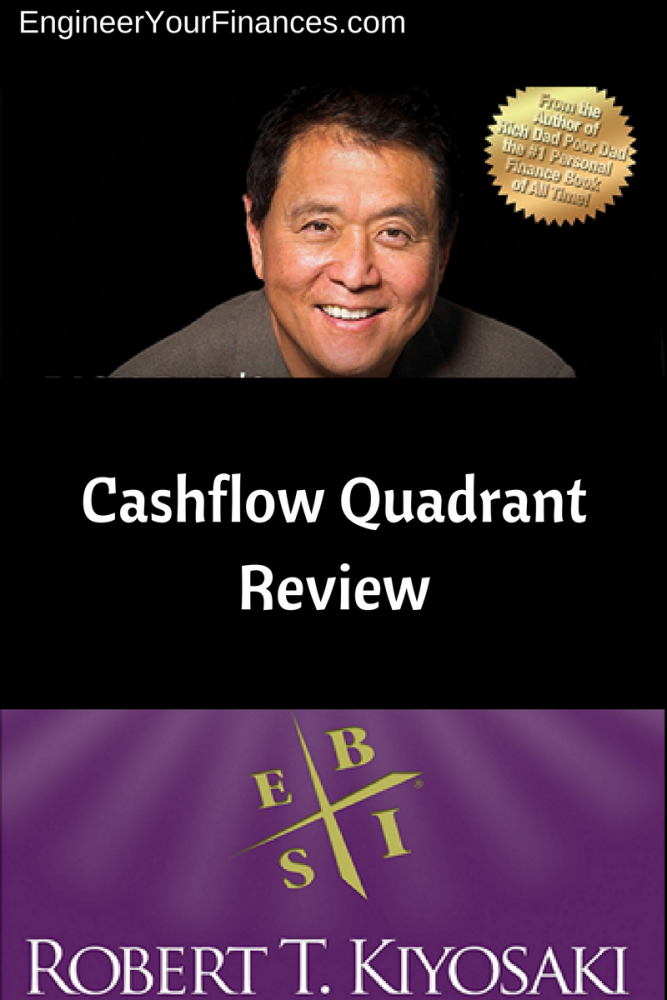Robert Kiyosaki’s book, Cashflow Quadrant: Rich Dad’s Guide to Financial Freedom, is a motivational and powerful guidebook. It goes into detail on how to break totally free from what he calls the “rat race,” by shifting from the “left side of the quadrant” where the majority of people work to the “right side” and in the long run financial freedom. He sets out how people confined in jobs or self-employment can progress by becoming financially literate and systematically build financial assets that generate income; which would ultimately free them to invest some time doing what they truly love.
The Cashflow Quadrant
Kiyosaki’s Rich Dad was actually his best friend’s father. He was a wealthy business owner that schooled Kiyosaki’s on how the rich and wealthy look at money. He also cautioned that how one looks at money determines how financially free they become as they get older. To explain this point, Rich Dad taught him the cashflow quadrant.
E S
B I
Just think of any job, and it will definitely fit into the Cashflow Quadrant. On the left side lives 99% of those who are in what Kiyosaki calls the rat race — the race to earn more income and get much more property that causes, even more, work, added stress and significantly less time for the things that truly matter. On the right side of the quadrant reside the people who generate their money passively. They get other people’s money and time to work for them, and as they become more productive and successful, they have an overabundance of time for the things they love.
Left-side (most people)
E: Employees
The majority of people are employees. They appreciate the very idea of financial security over the associated risk that comes with financial freedom. They make money for B’s and S’s who get wealthy and rich from their productive labor. Although working harder in this quadrant will earn you more money, it results in an unhealthy shortage of time for the things that matter which includes spending quality time with family and relaxation.
S: Self-Employed
A good number of small businesses are owned by the self-employed. If the Self-Employed want anything done right, they often have to do it themselves. They mostly are control freaks and are typically perfectionists. If the self-employed left their company for a long period, there would usually be no returns; they are the ones that keep the business going.
Right-side (the wealthy)
B: Business-Owners
Several small enterprises and nearly all large businesses and corporations are owned by B’s. They cherish building systems of people that make money, over “doing it right.” They know the distinction between the product and the business model. Even though quality might be important, profit potential is extremely important. Since they create systems and move out of an active role in operations, if these business owners leave their business for a long time, they would find it even more profitable than they left it.
I: Investors
The peak of financial growth is simply becoming a profitable investor. These individuals can make use of their money and other people’s money (OPM) to generate much more money with minimal physical effort. These are the people that provide B’s the funds to create and run businesses. Even though a lot of E’s have savings in the form of retirement accounts, I’s really live off their investments.
The Cashflow Quadrant shows the actions you have to take to become financially free. Although it doesn’t give instruction in any special skill, it is going to guide you to the skills you need to learn as well as the hurdles you will most likely face to your ideal goal. This book is extremely important for people who are actually keen on learning more about the process of becoming financially free.
Jason Butler is an Atlanta native, as well as businessman, blogger and teacher. Not only is Jason a prolific flipper, marketer, writer and side hustler his number of years in higher education and student support have given him expert knowledge in understanding the economics of the student loan industry.

